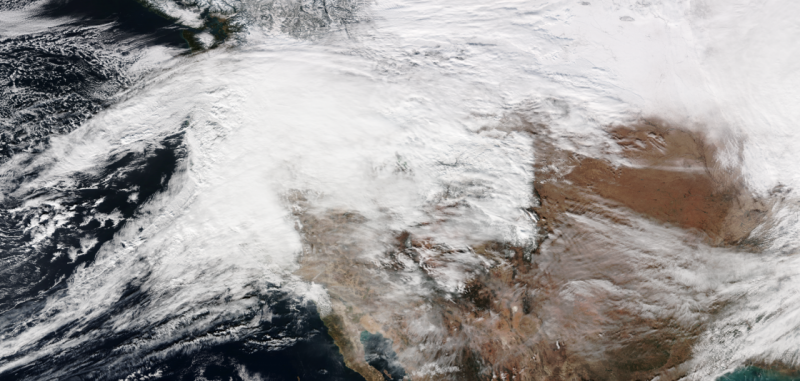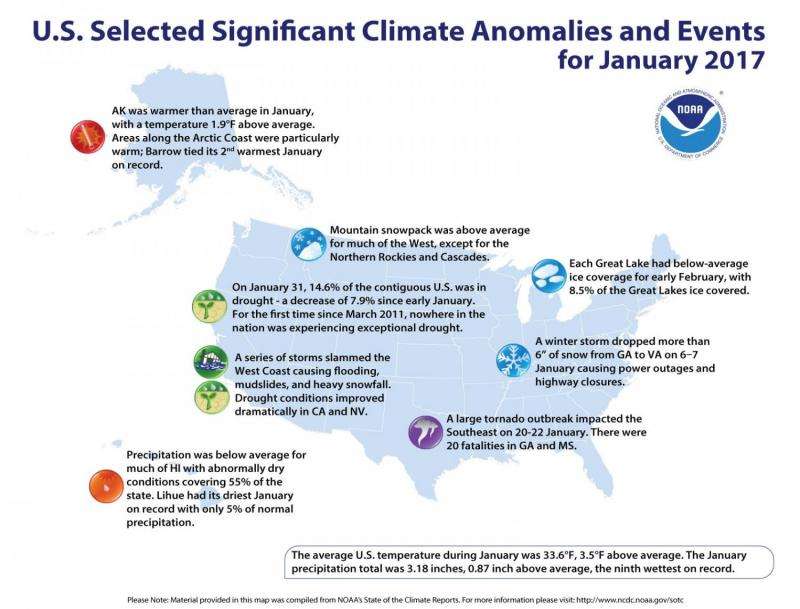January was wetter and warmer than average for the U.S.

By many accounts, winter seemed to stay mostly offstage in January. Rain was the star event, with warmer temperatures in the East having played a supporting role. Except for California: Parts of the Golden State saw more than 15 feet of snow, while mountain areas of the interior West, such as Colorado, Nevada and Utah, experienced higher-than-normal snowfall overall.
January by the numbers: Temperature
Last month, the average contiguous U.S. temperature was 33.6 degrees F, 3.5 degrees above the 20th-century average. January 2017 ranked as the 18th warmest January in the 123-year period of record, according to scientists from NOAA's National Centers for Environmental Information. Most locations from the Rockies to the East Coast were warmer than average with 24 states across the Southeast, Midwest and Northeast much warmer than average. The Northwest and Northern Rockies proved cooler than average.
January by the numbers: Precipitation
The average precipitation total for January was 3.18 inches, 0.87 inch above the 20th-century average—making it the ninth wettest January on record and the wettest since 1998. Large areas of the contiguous U.S. were wetter than average in January, and much above-average precipitation was observed across the Southwest, Southern Plains, Midwest and Southeast.
Other notable climate events in January included:
- Some drought relief: Intense precipitation in the form of rain and snow helped drought conditions improve dramatically in California and Nevada. By the end of the month, 14.6 percent of the contiguous U.S. was in drought—a decrease of 7.9 percent since the start of the new year.
- A very wet California with heavy snow in the Sierras and Rockies: A series of storms, driven largely by atmospheric rivers, slammed the West Coast causing flooding, mudslides, and heavy snowfall in the Sierra Nevada Mountains. As of February 1, some mountain locations across California, Nevada, Oregon, Utah, Arizona and Colorado saw snowpack totals more than 180 percent of normal.
- Tornadoes in the Southeast: A large tornado outbreak impacted the Southeast on January 20-22. There were 20 fatalities in Georgia and Mississippi.
- Less ice in the Great Lakes: Each of the Great Lakes had below-average ice coverage in January, and by the start of February, ice coverage across all lakes tallied 8.5 percent.
- Another warm month for Alaska: The state was warmer than average in January with a temperature 1.9 degrees F above average. Areas along the Arctic Coast were particularly warm.

Provided by NOAA Headquarters





















